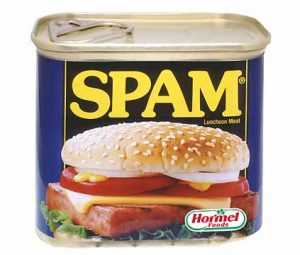 Google the words “how to increase effectiveness of email campaigns” and you’ll get nearly 24,000,000 hits. That’s right—24 million. An equally staggering statistic is that, depending on what you define as spam, some 75 to 90 percent of all e-mail traveling across the Internet is considered junk mail.
Google the words “how to increase effectiveness of email campaigns” and you’ll get nearly 24,000,000 hits. That’s right—24 million. An equally staggering statistic is that, depending on what you define as spam, some 75 to 90 percent of all e-mail traveling across the Internet is considered junk mail.
Given these daunting figures, it’s hard for me to suggest an email campaign as a great way to cold-call for new business. It’s also hard to write a blog post that suggests new and creative ways to title your emails or optimize them to slip through spam filters and increase open rates by a fraction of a percent.
But what I can do is point out a few facts:
- People are overwhelmed with information. This means the odds of your email rising to the level of getting their attention are slim to none.
- There is a social media backlash afoot. An article in the UK-based daily mail earlier this year revealed that Google+ users log onto the site a mere three minutes a month, compared to seven hours for Facebook. Another article in Businessweek cited QR code fatigue. This is a clear sign that we’ve reached a limit on how much information we can take in, and how much time we have to interact online.
- Consumers are turning more and more to texting as an alternative to emails. This is due to the instantaneous nature of this mode of communication.
Successful Email Campaigns
In spite of these facts, there are still ways for email campaigns to be successful. They just need to meet several criteria:
- They shouldn’t be the initial point of contact with potential buyers. Busy people don’t want to be bothered with your product or service until they recognize a need and are ready to purchase or at least investigate the possibilities. Qualify prospects first through click-throughs from your website, when you meet people at tradeshows and networking events, or are otherwise introduced before sending email campaigns.
- Whenever possible, meet customers and prospects the old fashioned way, face to face. When you invest the time and money to meet someone in this way, the relationship becomes more personal as opposed to email campaigns that are faceless and impersonal. It’s easy to delete an email from an unknown source. On the other hand, it’s harder to turn away a smiling person who has an interest in what you can do for them.
- Use email campaigns only when a relationship exists. Trust built on face-to-face interactions dramatically increases the likelihood that your electronic communications will be opened and acted upon. You’re no longer junk mail peddler—you’re a friend.
The digital world is changing rapidly. Yesterday’s rules no longer apply. That’s why it’s important to recognize when last year’s sure-fire approach has run its course, and when it’s time to start anew.
